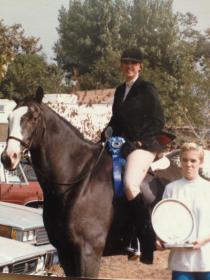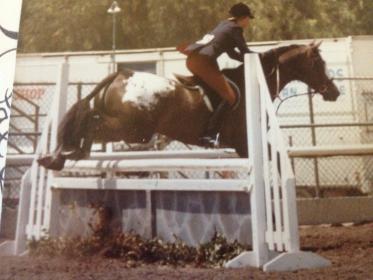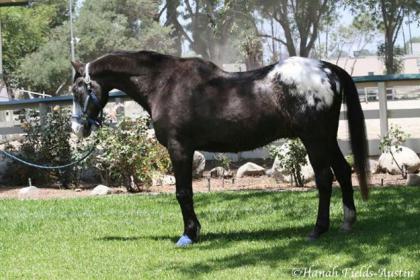Since this sounds like your first, owned show Hunter., really think you need to use your trainers skill and contacts selecting a Hunter for you. By all means mention to her you would like to try to find something with a bit more flash. But be aware more flash is far more common in breeds built for other jobs and the conformation to excell at those other jobs does not allow a good Hunter round. They have a shoulder, for example, that won’t allow the horizontal forearm for high knees over the jump and, as mentioned, are bred and built for a shorter, softer step that physically cannot be lengthened to make the lines.
The physical build to create the Hunter jump is the most important thing to shop for. If you start with that and add chrome instead if just looking for that flash you’ll do better, Your trainer is an expert in that build and should be respected…but, again, you could ask her to look at a little more bling. Be aware that might also raise the price.
Somebody upthread mentioned their QH doing both As and QH shows? Certainly out there but something like that might be out of your price range if they are trained up and successfully competing in both.
Think it would be a fabulous idea to sit and watch the shows before buying. Pay attention to the type horse that pins well, doesn’t have to win, look for consistent decent trips. Paint them all plain brown in your mind and concentrate on the step, jump and overall quality… And make yourself sit and watch for hours, until you are bored with it. That’s what the judge does and when you start seeing details. If you look at sale horses after watching hours of rounds, it gets a whole lot quicker and far easier weeding through what you are looking at. Nope, nope, yes Id like to get on that one…
Your trainer also will have a better idea of the temperament you need and how the horses she presents to you meet your needs. Your part is to really consider each, ride it, jump it, learn from it, be clear on what you do it don’t like. Paint them all plain brown in your mind so you can concentrate solely on ability and suitability. If it’s a flasher one, paint it brown so you don’t get swayed by a pretty package,
Just for the record, owned or leased many horses of many colors, except plain bay. Never had one. Never tried to avoid them but in two equally suitable horses, went for more flash. But all the other necessary attributes were there, color was just a bonus. That’s what you need to keep foremost in your mind, all the other boxes need to be checked, color is just the icing on the cake. Don’t fall for a stale or bad tasting cake with pretty frosting.
And you can full lease too, let you get better and start showing without a huge commitment to a plain horse that’s really the best match for you, today. 6 months or a year further down the road, more horses will be suitable then are today, deepen your prospect pool.
 (One of my favorite horses ever was a great Paint!) Tell me the truth: if I want to show hunters, am I sticking to the bays?
(One of my favorite horses ever was a great Paint!) Tell me the truth: if I want to show hunters, am I sticking to the bays?
 But what do I know…
But what do I know…

